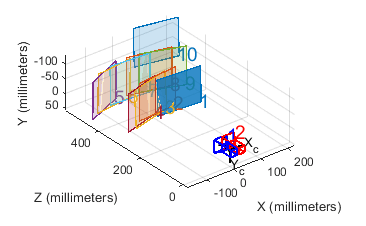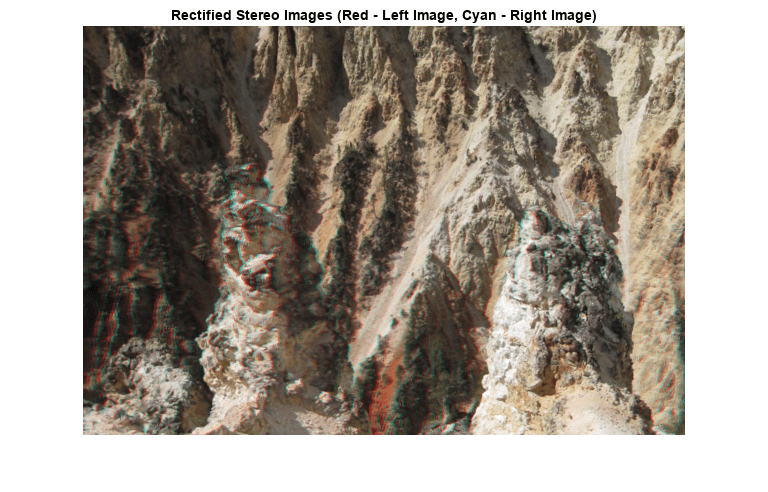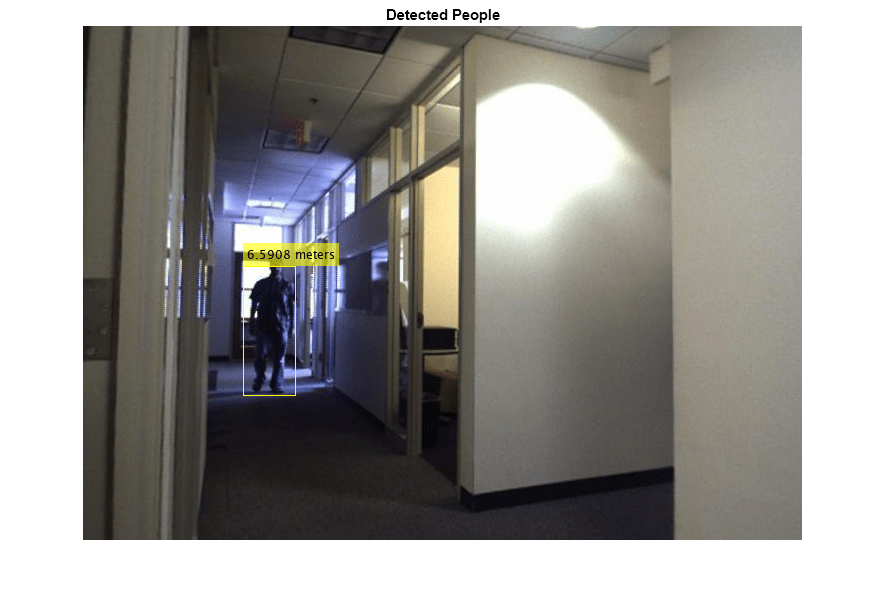立体视觉
立体矫正、视差和密集三维重建
立体视觉是通过比较同一场景的两个或更多视图从相机图像中恢复深度的过程。这种计算的输出是三维点云,其中每个三维点对应于其中一个图像中的一个像素。
立体图像矫正就是将图像投影到一个公共图像平面上,使得对应点具有相同的行坐标。此过程对于立体视觉是有用的,因为这将二维立体对应问题简化成了一维问题。例如,立体图像矫正经常用作计算视差或创建浮雕图像的预处理步骤。

函数
主题
- 坐标系
指定像素索引、空间坐标和三维坐标系。
- Using the Stereo Camera Calibrator App
Calibrate a stereo camera, which you can then use to recover depth from images.

